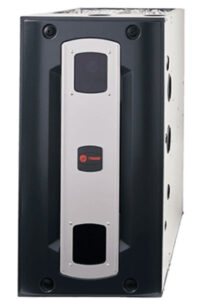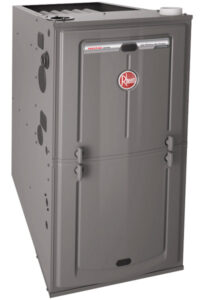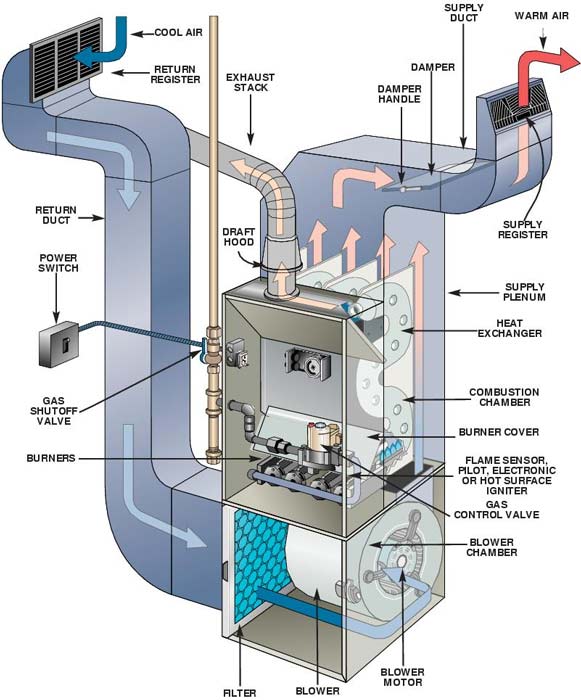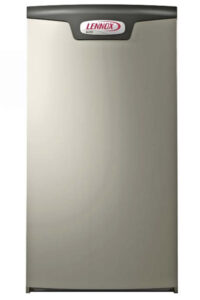Leonard Splaine Furnace Heating Systems in Northern Virginia

A furnace is an appliance that produces heat to supply warmth to a building. This is accomplished by combusting fuel such as gas or oil, or passing electricity through resistive heating elements.
It is totally different from a heat pump, which transfers heat from outdoors into the building. If your home heating system is linked to an outdoor unit with a fan, but doesn’t include an air conditioner, then it is a heat pump and requires different maintenance than a furnace.
A furnace can provide a reliable source of heat for your home, however if it is not functioning optimally it can not only put your comfort at risk, but also your safety.
When your furnace breaks down, it can create a number of problems, particularly in the colder months. Besides the discomfort of being inside an icy home, the possibility of your pipes freezing and bursting is also a very big concern. That is why Leonard Splaine & co is available 24/7 – even on weekends and holidays. We understand that furnace emergencies don't always happen at a convenient time, so our team of technicians is always on standby to help when you need it most.
How Does a Furnace Work?
Gas furnaces are quite prevalent in most homes. Even though many homeowners have a basic understanding of gas furnaces, they may not be aware of the internal workings of the system. At Leonard Splaine, we encourage home owners to understand how this very essential appliance work, so that you will know how to keep it running and if needed, how to replace it.
To better understand how a gas furnace really works, let’s take a look at its various components. To help you visual each part of a furnace, we've included a diagram for you to refer back to as you read down the list.
Thermostat
The thermostat enables you to set the air temperature in your house. When you adjust the temperature on the thermostat, it signals the control board in the furnace to initiate the heating process. This is done by activating the ignition switch.
Ignition Switch
The ignition switch acts as the "trigger" to ignite the gas in the combustion chamber of your furnace. The gas is then fed into the chamber through gas jets. An older furnace will have a pilot light to ignite the gas jets, while newer furnaces have a hot surface ignitor for the same purpose.
Gas Valve
Once the temperature in your home has reached the setting indicated on the thermostat, the thermostat will close the gas valve, thereby stopping the supply of warm air into the house.
The furnace's gas valve controls the opens and closes, which allows gas to flow to the pilot light and burner(s). While the component itself if actually rather simple, this function makes the gas valve is a crucial part of your furnace.
The procedure will start again once you raise the temperature of the thermostat or the temperature in your house plummets too low and the heater activates to bring back the correct temperature based on the thermostat settings.
For your residence to be appropriately warmed, all the components in your furnace must be functioning correctly. Any single malfunctioning piece can lead to problem. Poor air circulation, blowing of cold air, and other issues are often the cause of service calls to Leonard Splaine & Co.
Looking for a New Furnace or Need to Service Your Existing Furnace?
Are you interested in buying a new furnace or do is you furnace leaving you out in the cold and in need of service? Then give our team of experts at Leonard Splaine a call today. We will find the best solution for your needs!

Signs Your Furnace Needs Repair
For a furnace to work properly, motors, sensors, igniters, gas valves, fans, flame rectification systems, controls, and bearings must all be in good condition. If one of these components is faulty, it can result in the entire system malfunctioning. This is why regular maintenance is so important.
A furnace is a complex machine composed of many components which must all work together in order for it to operate correctly. If one part is not functioning properly, the entire system can cease to function.
Possible causes for a furnace to shut down prematurely include a faulty flame sensor, which can prevent the gas valve from being activated, as well as a clogged flue pipe/exhaust vent. If dirt and debris accumulate and block the flue pipe, it can lead to overheating of the furnace, resulting in a safety mechanism kicking in and shutting it down.
Signs are usually indications or warnings that something is about to happen. Before you find yourself suddenly stuck in a cold house during winter, keep an eye out for the following warning signs your furnace needs repair.
- Abnormal furnace smells
- Persistent and disconcerting noises
- Poor air quality
- Short cycling
- A tripped carbon-monoxide detector
- A discolored pilot light
- Inadequate heat/airflow
- It won’t turn on or off
We'll look at each of these signs in more detail below:
Odd Smell Coming from Furnace
The subtle odor of fuel is not necessarily a concern, because Furnaces can smell like the fuel that they use, especially when they are turned on for the first time in a year. However, if there is a strong smell of fuel, an unexpected smell, or one that doesn't dissipate, then it could be an indication of a gas leak or dust buildup in the unit. Our HVAC experts can inspect the system to identify the source of the smell.
Persistent Noises
The functioning of furnaces usually creates some noise, however, if you hear any noise that is out of the ordinary, persistent and disturbing, it may be an indication that there is an issue. Our HVAC experts are familiar with the connection between certain furnace issues and the sounds they make, so if you hear something strange coming from your furnace, it's best to get in touch with us.
Some of the likely sounds you could hear from your furnace and their possible causes are:
- Squealing noises often result from belt or fan issues
- Banging or groaning noises can be caused by loose internal parts
- Scraping noises usually mean warped fan blades and/or a broken motor
- Thumping noises might indicate an imbalanced blower wheel
- Unusually loud or prolonged rumbling may arise from a faulty gas valve
- Rattling noises could mean the metal housing fasteners are loose
- Clanking noises often occur when debris gets stuck in a compressor or fan
- Popping noises often result from ductwork sheet metal reacting to air pressure variations
- Hissing noises may be air escaping from a loose air filter, a partially obstructed vent, or leaky ductwork
- Whistling noises may signal a refrigerant leak in the condenser
Poor Air Quality
Maintaining a clean and well-kept furnace system can have a significant effect on the quality of indoor air. If a furnace is neglected or not cleaned properly, allergens, bacteria and other particle-containing air can be spread through the heated air, leading to illnesses, respiratory issues and allergic reactions such as itchy eyes, watery eyes and headaches. Fortunately, many air quality issues can be remedied through simple steps such as changing the air filter, cleaning the ductwork, and dusting the unit.
Difficulty Starting
As a furnace gets older, you could have more difficulty starting and maintaining the appliance. You probably need a repair if you have to restart your furnace or try to start the appliance several times during the day.
Thermostat damage or disconnected wiring are common causes of these functioning problems. The problem should be resolved by replacing the damaged component.
Inadequate Heat
A tell-tale sign that your furnace is in need of repairs is if it is not adequately heating your home. If you notice that no heat or only low levels of heat are coming through despite the thermostat being set, it's time to schedule repairs. Possible causes are leaks in the ductwork that allow the treated air to escape and a malfunctioning thermostat that does not correctly transmit the necessary signals to the furnace.
Discoloured Pilot Light
Pay close attention to the hue of your pilot light. Generally, if the flame is blue, it is in good condition. However, if the light changes to yellow, it may be a sign of a venting issue. This could be dangerous as the emission of carbon monoxide may be impeded and can lead to health risks for you and your family, as well as increasing the chances of combustion.
Carbon-Monoxide Detection
Your furnace is equipped with a carbon-monoxide detector that is meant to signal you if poisonous gases are present. If the alarm is triggered, immediately switch off the furnace and open the windows to provide ventilation for your residence. It is advised to consult the gas campany and an HVAC worker to identify the origin of the gas. Do not postpone if you spot any of the indications mentioned above, schedule an assessment and the necessary repairs as soon as possible.
Unexpected Increase in Energy Bills
If you're finding yourself paying higher electricity bills than usual, it may be due to an inefficient furnace that's working overtime in order to provide adequate warmth. If you notice your heating system is running constantly, contact us. We can help you lower your energy expenses by replacing your existing unit with a more energy-efficient option, such as a heat pump or ductless system.

Our 100% Satisfaction Guarantee
We're so confident you'll find us to be a company you can rely on for all your heating and air conditioning needs that we guarantee your complete satisfaction! Contact us today and experience the difference for yourself.
How Much Does a Furnace Repair Cost?
Furnace repairs can be daunting, especially if you don’t know what to expect. There are many factors to account for when estimating furnace repair costs, including:
- Type of repair needed
- Type of furnace you own
- Type and validity of warranty
- Age of furnace
- Contractor you hire
We’ll break down the details of each of these cost factors to help you better determine how much your furnace repair may cost you.
Type of repair
Due to the variety of components that furnaces contain, it is hard to estimate the cost of a repair until a certified technician can assess the issue. For instance, if the furnace doesn't begin when you turn it on, any of the numerous components could be the reason for this malfunction.
- A broken thermostat
- A dirty air filter
- A dirty flame sensor
- A faulty gas valve
- And much more...
For every issue with your furnace, there is an associated cost. It is difficult to determine an accurate price for the repair without first examining the furnace. Therefore, be cautious if a HVAC company offers to give a price quote over the phone without examining your furnace.
Type of Furnace
Gas furnaces are typically more expensive to fix than electric furnaces due to their intricate internal components.
These components are generally more complex than those in electric furnaces and require more time and effort to repair.As the illustration of a gas furnace earlier in this article showed, a gas furnace is a complex system with quite a number of components and systems. As such, repairs to such a system can be more costly.
Whether It's Still Under Warranty
If your labor warranty or parts warranty is still valid, the cost to repair your furnace could be fairly inexpensive.
Two types of warranties you might have are:
Labor Warranty
Most companies/contractors offer a minimum one-year labor warranty on their furnace installations which covers the cost of labor to fix it if there is a problem with the installation. In addition, they usually offer warranties on repairs as well, but these are usually limited to the repair itself, for instance a 90-day warranty for a thermostat repair will include only the same issue that was previously fixed.
Parts Warranty
The manufacturer of your furnace (Trane, Carrier, Lennox, etc) typically covers a parts warranty for any malfunctioning components due to manufacturing problems. This warranty usually lasts up to 5 years, while extended warranties may range from 7-15 years.
Additionally, some manufacturers offer lifetime warranties for heat exchangers.
It is important to remember that in order for the warranty of your parts to stay valid, an annual maintenance by a professional is necessary. If you haven't kept up with the maintenance of your furnace, it is likely that the warranty is invalid.
Age of Furnace
Depending on the age of your furnace, you might be able to avoid costly repairs by restoring it. Restoration can be a great choice for furnaces with worn or stressed-out components, or ones that are showing signs of wear.
Basically, this kind of work can help a furnace that has not broken down yet, but is in danger of doing so. Restoration is often pricier than just making repairs, but it is cheaper than replacing the furnace altogether. If your furnace is aging and starting to wear out, expensive repairs could be on the horizon, and a restoration may be the most cost-effective approach.
Your Repair Contractor
The old adage “You get what you pay for” is especially pertinent when considering which contractor to hire for a furnace repair.
Generally, the more highly qualified and experienced the contractor is, the higher the cost for their time and services.
Rather than settling for a bargain-basement contractor, it's important to find one who possesses the necessary knowledge, skill and expertise to do the job properly and efficiently. After all, it's not worth risking the potential consequences of an inferior job.
Signs It’s TIme to Buy a New Furnace
It's essential to monitor your furnace regularly to be aware of when it's time to replace it. Paying special attention once the furnace has exceeded its planned lifespan is very important since this may indicate that you'll need to change it sooner than expected.
Here are some signs that you should replace your furnace:
Frequent Repairs
At some point, your furnace may require repairs due to typical wear and tear. If you have your heating specialist come in for annual maintenance, you don't need to worry.
However, if you have to call them in more and more often, it might be time to consider purchasing a new furnace. Maintenance on a furnace that is not functioning efficiently can become expensive, so it would be beneficial to have one of our technicians install a new system for you.
Aging Furnace
How long have you owned your current furnace? If it is older than 15 years, its age is a sign that you ought to think about getting a new one. Even the best furnaces can't last more than 15 years, no matter how well you look after them. Therefore, you should be aware of the age of your heating system. When you realize it is getting on with age, consider replacing it.
Older furnaces tend to become less efficient as time passes. This means that it will run for longer than usual in order to heat your home, leading to higher power bills. In the long run it's more cost effective to replace your furnace when you start to see a decrease in efficiency.
Most furnaces come with a manual that states how long they can be expected to last. Furthermore, you can talk to an expert to get a better understanding of your furnace's lifespan. This information will help you make plans to get a new furnace before the end of its life expectancy. You don't want your furnace to break down in the middle of winter when you need it most.
High Energy Costs
Having a gas or electric furnace in your home can prove to be a money-saving investment. If your furnace is in good working condition, it won't take much energy to maintain a comfortable temperature throughout the winter. However, if your energy costs seem to be increasing abruptly at the end of each month, it's time to have your furnace inspected.
If there is an issue with your furnace, it will use additional energy to maintain the set temperatures, resulting in increased utility bills. To avoid this, you should replace the furnace with an energy-efficient model that will help you to save money in the long run.
Furnace Maintenance
Maintaining your furnace properly can lengthen its lifespan, lessen your energy bills, and lower the probability of a breakdown. Our maintenance specialists can make sure your furnace is venting gases properly, the piping and chimney are undamaged, the temperature controls are accurately calibrated, and there are no leaks in the heat exchanger. Additionally, we will keep your furnace free of dust and dirt, since 90% of heating system problems are caused by these elements.
Why Is Maintaining My Furnace Important?
Regular upkeep of a furnace can enhance its longevity, security, energy-efficiency, and tidiness. Nobody desires to be inhaling unclean air indoors. By being proactive in its maintenance, we can guarantee breathable air and reduce the risk of your furnace breakdown in the middle of winter.
But there are other benefits of scheduling regular furnace maintenance:
- Regular maintenance validates your furnace’s warranty: Chances are high that your furnace will need repairs at some point in its lifetime. A valid warranty can save you money on furnace repairs.
- Regular maintenance can ensure that your furnace operates efficiently: Over time, the buildup of soot and debris can mean that your furnace isn’t working as efficiently as it could.
- Regular maintenance can improve your furnace’s life expectancy: This means that you get the most out of your furnace. Modern furnaces last an average of 15-20 years. Some can last even longer. But when your furnace isn’t regularly maintained, its lifespan can decrease drastically.
- Regular maintenance can catch issues before your system breaks down: This can prevent breakdowns that leave your family in the cold. It can also save you money on emergency furnace repairs.
What Does Furnace Maintenance Include?
Furnace maintenance, which usually takes place annually, serves two purposes: it tunes up the furnace and helps to keep it running efficiently. Furnace maintenance are usually divided into two broad groups:
- Furnace inspection
- Furnace cleaning
We'll take a look at what each entails below.
What Does a Furnace Inspection Include?
Following the installation of a new furnace in your home, the first type of furnace inspection is carried out by an external inspector to verify that the contractor has installed it correctly.
The second type of inspection happens when the furnace receives its yearly tune-up, when an HVAC technician looks over the furnace to guarantee that it is functioning properly.
The Furnace inspection protocols involves:
- Inspecting carbon monoxide levels
- Inspecting the unit’s condition and wiring
- Satisfactory flue venting
- Inspecting the condition of gas line components
- Safety shut-off equipment
- Inspecting the condition of your furnace’s heat exchanger(s)
- Inspecting the condition of your system’s filter
- Inspecting the condition of your furnace’s flame sensor
- Inspecting your furnace’s temperature rise
- Checking the condition of your system’s blower motor
When your HVAC technician performs a furnace inspection, these benchmarks help ensure that your furnace is operating safely and efficiently.
What Does a Furnace Cleaning Include?
Once your HVAC technician confirms that your furnace is operating safely, they should also clean your furnace. This helps maintain your system’s performance and keeps the air in your home cleaner.
During a furnace tune-up, the components that your HVAC technician should clean include:
- The flame sensor: When your furnace’s flame sensor collects too much soot, it can prevent your furnace from turning on. Your technician can help you avoid this by cleaning the flame sensor during your furnace tune-up.
- The plenums: Your system has two plenums that typically look like metal boxes connected directly to your furnace. The plenums help provide your system with air and move the air into your living spaces. Your HVAC technician should inspect your system’s plenums for mold, insulation, and other debris. They should be cleaned periodically.
- The furnace cabinet: Your furnace cabinet accumulates dust and other debris throughout the year, especially if your filter can’t catch smaller particulates. But over time, that dust and debris can affect your system’s performance. To help with this, your HVAC technician should clean your furnace cabinet during your annual furnace tune-up.
What are the Best Furnace Brands & Models?
When deciding which furnace brand to choose for your home, there are a few main factors to consider. Cost of installation, energy efficiency (AFUE ratings), and the warranty are all important elements to consider when selecting a new heating unit.
Additionally, if you're replacing your entire HVAC system, you may be interested in learning about the top air conditioner brands.
It is important to also focus on reliable performance and energy savings when choosing a furnace.
Carrier, Trane, Lennox and Rheem are some of the best-known brands on the market that are known for their reliability and quality. Below we'll take a look at the currently top-rated model for each.
Carrier Infinity 98
The Carrier Infinity 98 (59MN7) gas furnace offers enhanced efficiency of 98.5 AFUE and a variable capacity gas valve that can open anywhere from 40% to 100% based on your home's heating demand.
At lower temperatures, the furnace consumes more fuel to keep up with the thermostat's requests. To reduce fuel usage, this furnace features a modulating gas valve and a variable speed blower compared to single speed blowers that start at full power before the furnace is warmed up, resulting in cooler air coming out of the vents.
Warranty: Lifetime heat exchanger warranty; 10 years on all other parts.
Pros: The advantages start with premium efficiency and move to indoor climate control. Variable capacity heating keeps the temperature in your home very even.
Cons: Premium efficiency comes at a premium price. This is an expensive furnace and not worth the cost in terms of efficiency – you’ll save a thousand dollars or more if you choose one of Carrier’s efficient two stage furnaces, but only lose a few percentage points of efficiency.
Trane S9V2

Trane S9V2 Gas Furnace
This 2-stage furnace with a variable speed fan provides 96% AFUE efficiency. The furnace runs at low capacity, or 65%, to provide adequate heating for your home at your thermostat setting.
The Vortica II variable speed blower adjusts the heating cycle by starting low, building up and then slowing down when the burner shuts off and pushes out the remaining heat. The ECM motor is more energy efficient than standard PSC motors and the furnace has communicating technology which allows the components to share information with the thermostat for optimized comfort control.
Warranty: Trane offers a Base Limited Warranty on all its products. This warranty applies if the product isn't registered and covers the applance for 5 years. If the product is registered, then the Registered Limited Warranty applies and covers the product for 10 years.
Pros: The merits of the Trane furnace are undeniable; it is renowned for its quality, durability, and efficiency. This top-rated brand offers an 18-25-year life span with regular maintenance and only a few repairs.
Cons: With that said, Trane furnaces come with a hefty price tag, compared to other mid-tier brands such as Heil, Armstrong, and Goodman. If you are not planning on living in your current home for 10+ years, then opting for a less expensive model may be the better option.
Rheem R96V

Rheem EcoNet™ Enabled Prestige® Series Variable Speed Multi Position (R96V)
Rheem furnaces have recently risen in quality, now boasting excellent ratings. These furnaces offer two stages of heating, combined with a variable speed blower motor, and an energy-saving ECM motor.
The combination of these features provides the best value in terms of efficiency and climate control. Pros include an energy-saving ECM motor, two stages of heating, and a variable speed blower motor. Cons may include a higher cost than some other brands.
Warranty: The industry standard – Lifetime heat exchanger, 10 years on other parts.
Pros: The superior quality, productivity and temperature regulation offered by Rheem and Ruud makes them an attractive option, with a lower price tag than Trane and Carrier.
Cons: You should take into consideration the installation when opting for either of these two brands. Although Rheem is not as particular as Trane, Carrier or Lennox about who installs their furnaces, it is advisable to use a Rheem/Ruud certified installer - like Leonard Splaine - rather than a local installer that says, “we install anything… but we’re not certified in Rheem or Ruud.”
Lennox Elite EL296V
Lennox furnaces are renowned for their wide selection of features, such as their noise-reducing SilentComfort Technology and variable-speed blower motors. The Elite EL296V gas furnace, available from Lennox, is a top choice for its quiet operation and up to 98.7 percent efficiency.
Given their more than 100-year history in the heating and cooling sector, it is no surprise that Lennox products are dependable and efficient. To continue to stay ahead of the game, this enterprising company relentlessly researches and develops new advancements in their furnaces, such as energy-saving ratings, sound-dampening protection, and variable speed motors.
Warranty: Warranty on covered components is 5 years, compressor is covered for 10 years. Warranty on furnace heat exchanger is 20 years or lifetime depending on model. A 10-Year Extended Limited Warranty is available with product registration.
Pros: The advantages include good quality and better climate control than a single stage furnace offers. The furnace is quiet whether heating or supporting central air conditioning. Durability of this furnace – though not all Lennox furnaces – is similar to Carrier and Trane. It is very good.
Cons: The disadvantages are cost – Lennox is close to Trane in price. Additionally, be prepared for potential repair delays through parts shortages and shipment times.
Furnace Installation & Replacement Services
During the colder months, having a functional furnace can make all the difference in keeping your home warm and cozy. Unfortunately, like any other appliance in the house, you may experience a malfunctioning heating system that needs to be replaced. Look out for the signs listed above to help you determine when it’s time to replace your furnace. It is important to keep in mind that furnace-related issues can cause serious health concerns such as carbon monoxide poisoning, mold, and other air pollutants.
If you observe any of the warning signs in your residence, reach out to the professionals at Leonard Splaine & Co. Our technicians will evaluate your furnace and offer advice on what action needs to be taken.
We can also replace the unit and take care of the installation so that your home is safe and warm. Additionally, our services extend to duct cleaning, air conditioning, upkeep plans and emergency repairs for the people of Virginia. Contact our experts today to schedule your service appointment.

We Are the Expert Solution to All Your HVAC & Home Comfort Needs
Take it from our customers: we solve problems and deliver solutions like no other HVAC company can. Contact us today!







